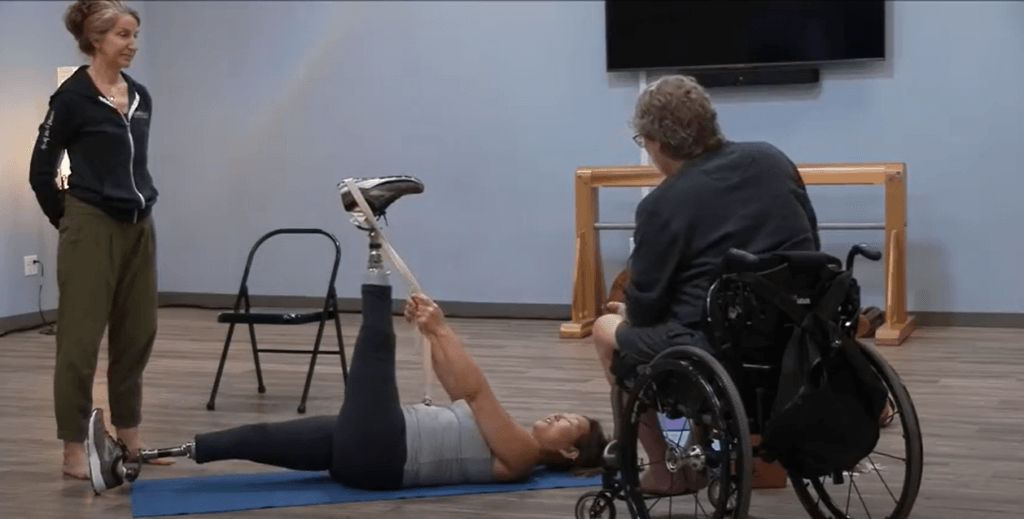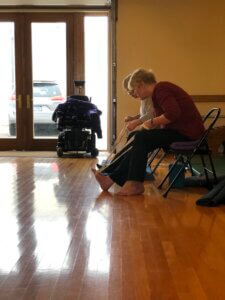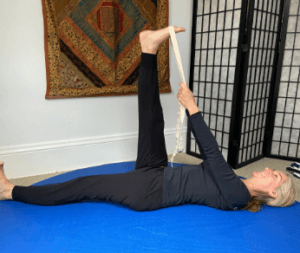We all possess one, but it’s an affirmation of our courage and determination if someone points it out. Yet while many sayings denote its metaphorical meaning, it is literally the linchpin that helps us sit, stand, walk, twist, and bend. It is “the backbone” from which the experience of asana emerges.
Lie on your back on the floor or a comfortable steady surface. Have a yoga strap or similar close by. To your ability, bend the knees and place your feet flat on the floor, tuck the pelvis, and straighten one leg while trying to maintain the tuck. Providing support as needed, bring the bent knee to the chest and place the strap around the foot, holding one side in each hand. As you are able, slowly raise and straighten the leg of the bent knee, creating a lengthening sensation in both legs. Direct the sit bone of the raised leg to move away from the waist. Keep the shoulder blades on the floor while broadening across the collar bones and front and back ribs. Embrace and feel the “happening” from the tailbone to the top of the head, and then through the arms, legs, and all aspects of the pose. Relax the throat while holding the pose for several breaths. Bend the knee of the raised leg and bring the foot to the floor. Pause, feel, and repeat the pose on the other side.
The underlying sensations of this asana are the same, regardless of differences in physical effort and appearance. The pose allows for a deepening in the back body presence, while the simultaneous vertical and horizontal extension directs inner body awareness. The legs, hips, and low back interact, and the alignment effortlessly integrates the mind and body.
Options:
- Same set up as above, adding a bolster/similar placed next to one hip. Bring both sides of the strap into the hand on that side, and slowly turn that thigh outward and to the side. On an inhalation, bring the leg back up, bend the knee, and place the foot on the floor. Repeat the pose with the other leg
- Have a partner (standing in a safe upright posture) gently but securely pull on the fascia/skin of the heel on the raised leg. This aids in the extension of the leg with the calves moving toward the heels (and feels fantastic).
- This one can be cumbersome, be cautious. Lie on the floor near the entrance of a doorway or hallway. Extend the first leg through the door, with the opposite hip close to the doorframe. Take the second (opposite) leg up on the wall near the doorframe/wall. In lieu of the strap holding the leg up, the wall holds the leg up
Benefits:
- Can balance both sides of the back, and also relieve tension and compression in the low back.
- Safely stretches hips, hamstrings, calves, and inner thighs.
- Space is created in the abdominal cavity and may aid in digestion.
- Removing gravity helps experience the pose rather than only “ achieve” the pose.
Find a short, four minute audio clip on the spine with Matthew Sanford here.



